US-VN History
A Republican Moment in the Study of Modern Vietnam
Published on
Studying Republican Vietnam, University of Oregon, October 14-15, 2019
In two separate senses, the study of modern Vietnamese history today is experiencing something of a republican moment.
It’s a republican moment in the sense that, for the first time, a critical mass of scholars is now highlighting the significance for Vietnamese political history of a local republican tradition with roots in the French colonial encounter and narrow branches that extend up to the present. Derived from an eighteenth-century impulse that animated the revolutions of 1789 and 1848 and infused the political culture of France’s Third Republic (1870-1940), republicanism celebrated liberty, equality and fraternity and promoted democracy, science, education and the rule of law. Republicanism’s most prominent enemies were the twin despotisms of monarchy and the Catholic Church. Given its French pedigree, it is not surprising that early scholarship on republicanism in Vietnam focused on moderately progressive European expats: attorneys, newspapermen and officials. More recent studies have explored Vietnamese republicanism in the quoc-ngu language press of the colonial era and in the ideological leanings of local activists and intellectuals. In this way, what Oliver Wolters might have called – the “localization” of the tradition – represents a defining preoccupation of this republican moment.
A republican moment in the scholarship, in a different sense, may also be discerned in a recent upsurge of interest in the postcolonial nation-state known as the Republic of Vietnam (or RVN). Founded in tandem with the communist Democratic Republic of Vietnam after the 1954 Geneva Accords, the RVN survived south of the seventeenth parallel for two decades until April of 1975. Led by an elite that had been exposed to republican political culture during the late colonial era, the RVN establishment grappled with this tradition even if it did not always respect or honor it. While depictions of the RVN rightly emphasize its authoritarianism, militarism and ill-fated relationship with the U.S., an enduring republican impulse south of the seventeenth parallel may be observed as well. It’s there in the machinery of democratic government including elections and legislative politics as well as in critical aspects of civil society such as a private press, independent labor unions, autonomous churches and student activism. None of these manifestations of republican culture survived in the Democratic Republic of Vietnam, of course, and republican norms there were rarely invoked in public after the suppression of Nhan Van Giai Pham in the late 1950s. In the South, on the other hand, Republicanism was present in many incarnations including as a standard against which local critics of the RVN appraised their government.
While scholars are now exploring both the Republic of Vietnam and the broader Vietnamese republican political tradition, the same cannot be said for journalists and popular writers. Indeed, one of the most striking features in the broader discourse on modern Vietnamese history is the disconnect between academic and non-academic interpretations of many topics including this two-headed republican theme.
The Republican Tradition
Before exploring the rise of this theme and the divergent approach towards it adopted in scholarship and popular discourse, its novelty deserves note. It is instructive that the terms “republic” or “republicanism” do not appear in the indexes of the three most important English-language works of colonial-era Vietnamese intellectual history – Alexander Woodside’s Community and Revolution in Vietnam (1976) David Marr’s Vietnamese Tradition on Trial, 1920-45 (1980) and Hue-Tam Ho Tai’s Radicalism and the Origins of the Vietnamese Revolution (1992). Nor do they appear as items in the index of standard academic political histories of the late colonial era such as William Duiker’s The Rise of Nationalism in Vietnam, 1900-1941 (1976) or Huynh Kim Khanh’s Vietnamese Communism, 1925-1945 (1980). During that same era, the most important French historians of Vietnam such as Bernard Fall, Georges Boudarel and Pierre Brocheux exhibited a similar lack of interest in Vietnamese republicanism.
Among the first foreign scholars to look at the topic seriously were historians of the French empire such as J.P. Daughton, Eric Jennings and Martin Thomas who started to address it in the early 2000s. Cognizant of debates over the link between French republicanism and French imperialism involving scholars such as Alice Conklin and Gary Wilder, these scholars explored republican impulses animating the imperial project in French Indochina especially in their interaction with republicanism’s traditional enemies: the political right and the Catholic Church. During this era, French scholars such as Gilles de Gantès and Agathe Larcher-Goscha worked in a similar vein, teasing out the republican agenda of “progressive” colonial officials such as Paul Beau, Albert Sarraut and Alexandre Varenne. The agenda of this new work went against the grain of an older scholarship that treated the ideology of French imperialism in a cruder and more undifferentiated fashion. The older scholarship emphasized overlap between the interests and perspectives of French missionaries and secular French officials; the new scholarship highlighted dissension between the two groups – and traced these conflicts to ideological differences that had long divided republicans and their enemies in the Metropole.
The earliest efforts to explore republican ideas in Vietnamese (as opposed to French) intellectual life in Indochina focused on the patriotic Confucian scholar Phan Chau Trinh. “Phan Chau Trinh started a reformist movement whose more radical aim was a democratic republic,” wrote Joseph Buttinger in 1967. “Although still dedicated to revolutionary action in 1912, (Phan) Chau (Trinh) had to give in to the now dominant republican trend in the national resistance movement.” (Buttinger, 151) Despite the provocative nature of this claim – that a republican trend dominated the Vietnamese national movement in the early 20th century – Buttinger never pursues it further nor does he examine in any detail the republican content of Phan Chau Trinh’s writings. In 2009, forty-two years later, Vinh Sinh published the first serious study of this topic in a volume entitled Phan Chau Trinh and his Political Writings. It located Phan Chau Trinh’s republicanism in his strong support for “popular rights (dan quyen), democracy (dan chu) and self-rule (tu tri) and in his equally full-throated hostility to monarchy and autocracy.
Later in the volume, Vinh Sinh translated the following passage from Phan Chau Trinh’s 1922 “Letter to Emperor Khai Dinh.”
In France at that time, distinguished philosophers such as J.J. Rousseau, Montesquieu, Voltaire and others, one after another rose up to expound their views of popular rights. Within a few decades, the influence of their ideas was felt throughout Europe….Eventually their ideas triumphed and the head of the French King, Louis XVI, was set on top of the guillotine….From that time on, (After the Revolution) France adopted a republican system, with a parliament with legislative power and a governing cabinet responsible to the parliament. At present, the fact that the autocratic monarchy is vanishing in the world, and that mankind thus can enjoy liberty is all thanks to the sanguinary struggle of the French people. Why doesn’t Your Majesty make arrangements with the minister of colonial affairs to take a tour of the Palais Bourbon, where you may obtain some notion of the spirit of Liberty, Equality and Fraternity of the people of a Republic? If you will compare it with the gloomy thousand year tyranny in our country, you will see that the sacred and inviolable ideals of popular rights are like the sun at noon, shining all over the world and leaving no room for autocratic monarchy to survive, let alone a barbaric tyranny. (Vinh Sinh, 99)
It is notable that despite the unmistakable republican language cited by Vinh Sinh, earlier interpretations of Phan Chau Trinh highlighted other influences on his political thought. Both Woodside and Marr emphasized his Confucian orientation and touted his significance as a nationalist more than as a radical republican. They also dwelled upon his pacifism and his reformism, familiar preoccupations of Vietnamese communist scholarship. Where Phan Chau Trinh’s republican instincts were most apparent, according to this earlier scholarship, was in his contempt for the Vietnamese monarchy and his call for its abolition. To be fair, Marr also mentioned Phan Chau Trinh’s rhetorical commitment to “the high ideals of the French Revolution.” But he never uses the term “republican” to describe Phan Chau Trinh.
The Vinh Sinh volume from 2009 was followed by three books that both used the term and dwelled on the significance of the republican tradition in colonial Vietnam. The first by Philip Peycam, started as a Ph.D. dissertation at SOAS supervised by the late great Ralph Smith. A history of southern Vietnamese newspapers during the 1920s, it was published in 2012 as The Birth of Vietnamese Political Journalism, 1916-1930. In a chapter called “French Republicanism and the Emergence of Saigon’s Public Sphere,” the book argues for the great impact of republicanism on Vietnamese political culture during the era.
“Colonial France had introduced republicanism into southern Vietnam under the pretext that its model of universalism would create a modern society in a backwards colony.” Peycam writes. “The colonial state did not anticipate a growing number of “natives” – mainly from the newly established urban bourgeoise – who would embrace Western modernity and the French republican message for the purposes of creating a modern local political culture on their own terms.” (Peycam p.67)
Along with several other central claims, Peycam’s book demonstrates the wide range of southern Vietnamese intellectuals whose political agenda could be characterized as republican, in some form.
Just two years later in 2014, I released my monograph on the northern writer Vu Trong Phung entitled Vietnamese Colonial Republican: The Political Vision of Vu Trong Phung. In it, I argued that Vietnam’s greatest modern writer expressed a strong republican vision even if his preferred forms of expression– fiction and first-person reportage – prevented him from releasing a manifesto on the topic. What I call a “late republican vision” in Vu Trong Phung’s writing may be discerned in his opposition to unbridled capitalism, in his disapproval of communist despotism, in his sympathy for the underdog and in his strong advocacy for science, education, freedom of expression, the rule of law and the welfare state. The label fits further. I suggest, because his literary heroes – Hugo and Zola – were giants of literary republicanism. Although I don’t develop the point systematically, I also point out that many elements of Vu Trong Phung’s republican sensibility were shared by friends and colleagues – like Phan Khoi, Lan Khai and Ngo Tat To – who, like him, wrote for Tan Dan Publishing House. Like these popular figures, Vu Trong Phung was an influencer and perhaps even a barometer that tracked changes in certain sectors of public opinion. In a final chapter of the book, I argue that the posthumous promotion of Vu Trong Phung by members of the Nhan Van Giai Pham group during the late 1950s might be seen as evidence for the persistence of this tradition among a subsection of DRV intellectuals. In 2012, my student Martina Nguyen submitted a dazzling dissertation that argued persuasively that Nhat Linh and the hugely influential Self-Strength Literary Group – contemporaries and rivals of Vu Trong Phung – also expressed a strong republican vision in their work.
The third recent book to foreground the role of republicanism in modern Vietnamese history is Christopher Goscha’s The Penguin History of Modern Vietnam first published in 2017. The theme is introduced in early chapters that link the late 19th century imperial conquest to the rise to power in France of fervently republican politicians such as Jules Ferry. These chapters also locate a republican impulse in the efforts of ambitious colonial officials like Paul Doumer and Albert Sarraut to strengthen and centralize the colonial state and to reform (in a moderately progressive direction) colonial policy and practice. The localization of the republican tradition is the subject of Chapter 5 entitled “The Failure of Colonial Republicanism Vietnam.” Following Vinh Sinh, Goscha highlights Phan Chau Trinh’s support for republican ideals such as “the rights of man” and “representative government.” Pursuing the republican theme further, he refers to Phan Chau Trinh’s 1907 open letter to Paul Beau as a Vietnamese “J’Accuse.” This refers to Emile Zola’s famous declaration on the Dreyfus Affair, a quintessential expression of early 20th century republican values. Goscha makes the provocative point that Ho Chi Minh’s famous “Claims of the Vietnamese People” (“Revendications du Peuple Annamite”) – sent to the American Secretary of State at the Paris peace talks of 1919 – focused on republican reforms not communism or independence. After WWI, a local republicanism was energized further climaxing with the program of Governor General Saurraut which included enhanced support for education, democracy, state centralization, judicial reform, anti-corruption and the vernacular-language press. Sarraut’s reforms found support among reform-minded Vietnamese who Goscha argues “bet on colonial republicanism”: Nguyen Van Vinh, Bui Quang Chieu, Nguyen Phu Khai and Huynh Thuc Khang. These figures are not normally lumped together under this label. Moving into the 1920s, Goscha describes a strain of republican reformism focused on attaining political representation for a new bourgeois class led by Duong Van Giao and Nguyen Phan Long and Bui Quang Chieu. The appearance of “the most prominent (Vietnamese) republican” – the brilliant journalist and political activist Nguyen An Ninh – reflected the growth of a new strain of youth-oriented republicanism also associated with Nguyen Thai Hoc and the militant Viet Nam Quoc Dan Dang. Goscha sees France’s mistreatment of the constitutionalists as the foolish repression of a moderate republicanism that, if left alone, may have evolved in the non-communist direction of India’s Congress Party. But France’s heavy-handed overreaction to the Party left bourgeois republicanism in a “stillborn state,” inadvertently providing a boost to the local Stalinists.
Compared to previous general histories of the country, it is striking how large republicanism looms in Goscha’s understanding of the political dynamics of the colonial era. Since Goscha’s authoritative text will likely remain the standard historical survey for the foreseeable future, his engagement with republicanism may encourage further interest in the topic. The belatedness of this development, however, begs an obvious question.
Why has Vietnamese republicanism only become an object of study in the last decade?
Three reasons.
One is that few colonial-era Vietnamese self-identified as followers of “chu nghia cong hoa” – the most common term for républicanisme according to Dao Duy Anh’s respected 1931 dictionary. Perhaps because of its earlier association with imperial expansion, the term was never embraced by Vietnamese activists in the same spirit as labels such as communist, socialist, anarchist, Stalinist, Trotskyist, constitutionalist or nationalist (all terms by which people referred to themselves during the era). Hence, proponents of the significance of colonial Republicanism (such as myself) must acknowledge questions raised about this thesis by the relative obscurity of the term during the era.
A second reason for the neglect of republicanism is the impact of the Vietnam War on the scholarship. During the conflict, left-leaning anti-war proponents of what became the orthodox school disparaged the shallow ideologies of non-communist political alternatives. Compared to the Marxist clarity of Ho Chi Minh’s movement, the political ideology of both his colonial-era rivals and successive post-colonial RVN regimes was hopelessly murky and/or reactionary. In cases in which a non-communist political orientation was obviously apparent – as with “Constitutionalism” during the interwar era or “Personalism” of the late 1950s/early 1960s, orthodox scholars tended to belittle them as inauthentic, incoherent and ineffectual. The DRV had an ideology, according to orthodox scholars, but the RVN did not unless one counts a slavishly pro-American anti-communism. For orthodox scholars, the superficiality of ideology in the RVN damaged its political legitimacy especially compared to its communist rival to the north. To the extent that orthodox scholars characterized RVN regimes ideologically, they relied on negative labels such as authoritarianism, militarism or even Fascism. In this context, a political orientation such as republicanism featured too many positive connotations to be useful to the budding orthodox school which crafted its historical arguments with an eye toward their potential utility in the rhetorical conflict over the War.
This leads to a third reason for the recent rise of interest in the topic: a generational shift among scholars towards a postwar perspective on the history of the country. It is probably no coincidence that the three scholars who have pushed the republican theme the hardest – Peycam, Goscha and myself – are all in our 50s and were children when the Vietnam War came to an end. As a result, the only Vietnam that we know personally is the authoritarian and repressive Socialist Republic. Rather than knocking the ideas of non-communist nationalists, we are – like many local intellectuals and democracy advocates – more invested in puncturing the myths of communist historiography and exploring political “roads not taken” during what is often presented as the inevitable rise to dominance of Ho Chi Minh’s communists.
While a local republican tradition has started to loom large in academic histories of modern Vietnam, it has yet to make a dent in more popular discourse about the country’s past. Perhaps the best example is the hugely influential Ken Burns/Lynn Novick documentary, The Vietnam War, which totally ignores the tradition in its treatment of the colonial origins of the conflict. Instead, as I explain in greater detail in a recent essay on D-Diplo, Burns and Novick advance the thoroughly misleading thesis that Ho Chi Minh’s communist party was the only serious anti-colonial force in the country prior to World War II. This specious argument allows the filmmakers to highlight a loaded contrast between the durable and authentic nationalist/ communist tradition embodied by the DRV and the thin pseudo-nationalism of the RVN, a fake political tradition hastily improvised by American cold warriors and their local clients. But like Hồ Chí Minh, Ngô Đình Diệm and his successors were also the legatees of older local political traditions such as colonial republicanism and anti-communist nationalism. This insight is overlooked in the Burns/Novick documentary which treats the RVN as an American puppet devoid of local roots or history prior to the onset of the Cold War. By failing to acknowledge the colonial-era history of republican nationalism, the documentary gives the false impression that the RVN was less rooted in the Vietnamese historical experience than the communist DRV and therefore was less of a legitimate political force.
The Republic of Vietnam
In contrast to the scholarship on Vietnamese republicanism, which appeared only in the past decade, writing on the southern Republic of Vietnam has been around for several generations. What is relatively new, however, is a recent break in the discourse on the RVN, from a harshly negative assessment that first emerged during the 1960s to a more complex and evenhanded view that dates from the 1990s and early 2000s. During the War, the most influential renderings of the RVN were disparaging depictions by antiwar journalists and academics like Frances Fitzgerald, David Halberstam, George Kahin and Al McCoy. The RVN inspired similar vitriol among the first generation of post-war historians whether liberals like George Herring and Neil Sheehan or radicals like Marilyn Young and Gabriel Kolko. For both liberals and radicals, South Vietnam was a puppet of the United States, created to stem the spread of communism in Asia. The RVN political leadership was nepotistic and authoritarian, the elite was venal and corrupt, and the military was cowardly and incompetent. The RVN also suffered owing to its ideological incoherence. The American presence dampened nationalist sentiment and damaged popular support for the state’s anti-communism which was viewed as an inauthentic foreign import. The culture and society of the RVN also received rough treatment in portrayals that emphasized the growth of prostitution, crime, drug abuse and social inequality in the cities and clumsy security initiatives and flawed nation-building programs in the countryside.
The problem with these negative representations of the RVN is not that they are wholly untrue. It is, rather, that they tell only part of the story. They ignore the country’s competitive political culture, its freewheeling civil society, its interesting intellectual and cultural life and the anti-totalitarian idealism of many of its supporters. They also disregard the relationship between many of the most illiberal features of the RVN and the ruthless, externally supported guerilla movement arrayed violently against it.
What then explains the sharply negative depiction of the RVN that crystallized during this period?
Several things.
One was a deep disapproval of the American intervention, on the part of many scholars and journalists, and a related tendency to romanticize America’s enemy and disparage its ally. For observers whose main objective was to hasten an American withdrawal, this tendency made practical sense. A second factor is that the RVN was largely open to foreign researchers during the era. These outside observers were able to view up close the many ugly aspects of a poor post-colonial society mobilized for civil war. Since the DRV during that era was almost completely off-limits to foreigners (outside of diplomatic corps and Chinese workers), it avoided a similar level of scrutiny. Finally, portrayals of the RVN produced after the War were undoubtedly shaped by the defeat and, ultimately, the disappearance of the country as an independent geopolitical entity. Preoccupied with these two massive blots on the RVN’s historical record, it is not surprising that scholars during the immediate post-war era fixated upon the roots of these dramatic failures.
The past several decades has witnessed the emergence of a revisionist scholarship on the RVN. An abnormally early example was Neil Jamieson’s 1993 study Understanding Vietnam, which featured an idiosyncratic and sympathetic ethnography of southern Vietnamese culture and society during the War. A turning point in the scholarship was achieved by Philip Catton’s Diem’s Final Failure: Prelude to America’s War in Vietnam published in 2002. It kicked off an important collective effort to revise the reputation of Ngo Dinh Diem and the government that he led between 1954 to 1963. While not uncritical of its subject, Catton’s book emphasized the ideological autonomy of the Diem regime and its deeply troubled relationship with the United States. For Catton, Ngo Dinh Diem was nobody’s puppet. Catton argued for the coherence of Ngo Dinh Diem’s political project the roots of which he located in a domestic anti-communist, nationalist tradition and a progressive social Catholicism. Among the scholars who followed in Catton’s footsteps in pursuit of new perspectives on the Ngo Dinh Diem decade were Jessica Chapman, Olga Dror, Jessica Elkind, Tuan Hoang, Kevin Li, Edward Miller, Mark Moyar, Jason Picard, Geoffrey Stewart, Mitchell Tan, Stan Tan and Nu-Anh Tran. Interesting revisionist approaches to the RVN under Ngo Dinh Diem’s successors have been carried out by Sean Fear, Van-Nguyen Marshall, Lien-Hang Nguyen, Keith Taylor and George Veith. And less dismissive accounts of the Southern Vietnamese army have been produced by Robert Brigham, Nathalie Huynh Chau Nguyen and Andrew Wiest. In addition, the rich literature, music and intellectual life of the RVN have been studied by a growing number of scholars including Jason Gibbs, Nguyen Vo Thu Huong, Trinh Luu and John Shafer.
The RVN in The Sympathizer
But while revisionist interpretations of the RVN are ascendant in the scholarly literature, the same cannot be said for accounts of the War intended for broad public consumption. (This is the same dynamic that we saw with the discourse on republicanism – rising in the scholarship but absent in popular accounts). A good example may be found in Viet Thanh Nguyen’s novel The Sympathizer first published by Grove Press in 2015. It’s safe to assume that many more people will read Viet Thanh Nguyen’s novel than all the writing of all the new scholars of the Republic of Vietnam combined. A New York Times best-seller, the novel has won eight literary awards to date including the 2016 Pultizer Prize for Fiction. Based on the success of the novel, Viet Thanh Nguyen won a MacArthur Foundation Fellowship and a Guggenheim Award in 2017. Acclaim for the novel has granted him a large public platform that includes regular space on the op-ed pages of the New York Times and Time Magazine. Although he addresses many topics in his role as a public intellectual, the Vietnam War, its legacy and representation remain persistent areas of interest. They sit at the center of his last non-fiction book Nothing Ever Dies: Vietnam and the Memory of War published by Harvard University Press in 2016. And they represent central themes of The Sympathizer, a novel that opens in Saigon right before its fall to communist forces and follows a cast of largely Vietnamese characters involved in the war and its contentious aftermath.
So, how does The Sympathizer portray the Republic of Vietnam?
It’s a tricky question since virtually everything in the novel is filtered through the voice and consciousness of its anonymous narrator, a Franco-Vietnamese, double-agent, loyal to the communists, who infiltrates the southern Vietnamese state and society and later the Vietnamese diasporic community in California. One could argue that everything in the book should be read as the view of its main character not its author. However, it also feels significant that the narrator of The Sympathizer is relatively vague as a character and that he expresses interest in a range of erudite concerns that more recall a college professor than a spy (would a spy muse this much on the “politics of representation”?). Moreover, since the narrator’s view is the only one offered in the novel, it endows the book with a general point-of-view that feeds into public understanding.
In general, the depiction of the RVN in The Sympathizer tracks closely with the views of the orthodox school. “Our politicians managed the shabby comic operetta of our country,” the narrator opines, “an off-key travesty starring plump divas in white suits and mustachioed prima donnas in custom tailored military uniforms.” (p.23) The highest ranking RVN official in the novel, the General, is depicted as slavishly devoted to France and the United States: “a man who had faith in (both) the mission civilisatrice and the American Way” (p.3). Further underlying his “compradore” character, the General’s opposition to communism is borrowed from abroad. It was “at Fort Benning in ’58 where Green Berets inoculated him permanently against communism.”(p.11) The narrator sees the real-life President Ngo Dinh Diem in a similar vein as a creature of foreign interests, referring to him as “an American puppet” who thought he was president (p.44). A devotion to foreigners defines ordinary citizens as well: “The atmosphere was strangely quiet in Saigon,” the narrator explains, describing the city on the eve of its fall. “Most of the Saigonese citizenry behaving like people in a scuppered marriage, willing to cling gamely to each other and drown so long as nobody declared the adulterous truth. The truth in this case was that at least a million people were working or had worked for the Americans in one capacity or another from shining their shoes to running the army designed by the Americans in their own image to performing fellatio on them for the price, in Peoria or Poughkeepsie, of a hamburger.”(p.7) This is fairly harsh, I think.
After its fidelity to outsiders, the most prominent feature of the RVN in the novel is its corruption. “Our society had been a kleptocracy of the highest order,” the narrator explains, “the government doing its best to steal from the Americans, the average man doing his best to steal from the government, the worst of us doing our best to steal from each other.”(p.85) The ARVN – the south Vietnamese military – is depicted as equally corrupt and venal, qualities that come to the fore when the narrator offers a handful of junior officers precious plane tickets out of the doomed city: “I summoned the five chosen officers for a very private meeting, one by one. We leave tonight? Asked the very nervous colonel, his eyes big and wet. Yes. My parents? The parents of my wife? Asked the major, a crapulent devotee of the Chinese restaurants in Cholon. No. Brothers, sisters, nieces and nephews? No. Housekeepers and nannies? No. Suitcases, wardrobes, collections of china? No. The captain, who hobbled a bit because of venereal disease, threatened to commit suicide unless I found more seats. I offered him my revolver and he skulked off. In contrast, the young lieutenants were grateful. Having earned their precious positions via parental connections, they bore themselves with the herky-jerky nervousness of marionettes.” With all due respect, the absence of even a shred of empathy in this portrayal is remarkable. As their entire world crumbles around them, ARVN officers portrayed as either teary-eyed, venereal disease infected or gluttonous obsess over the fate of their china collections and their servants.
Worse than its corruption is ARVN’s strangely violent posture towards its own people. Describing the fall of central Vietnam, the narrator says: “We could not believe that Da Nang and Nha Trang had fallen, or that our troops had shot civilians in the back as they all fought madly to escape on boats and barges.” (p.3) Later he describes southern Vietnamese boat refugees being “robbed and raped by their own soldiers.” (p.3) He also bemoans ARVN’s penchant for domestic political violence: “Our air force had bombed the presidential palace, our army had shot and stabbed to death our first president AND his brother, and our bickering generals had fomented more coups d’etat than I could count.” (p.24)
The novel’s depiction of women and gender relations follows orthodox tropes as well. As in many Hollywood Vietnam movies, the only female characters in the Saigon chapters are the corrupt wives of corrupt officials and prostitutes. A glimpse of “a covey of call girls, vacuum-packed into micro-miniskirts and fishnet stockings” named Mimi, Phi Phi and Ti Ti prompts an extended digression on this familiar topic. “Most were poor, illiterate country girls,” the narrator explains, “with no means of making a living except to live as ticks on the fur of the nineteen-year old American GI.” (p.36) While this depiction is familiar to audiences of Full Metal Jacket, it is not supported in recent scholarship on the history of Vietnamese sex work by social scientists such as Kimberly Hoang and the late Mai Lan Gustaffson. The brilliant oral histories carried out by Gustaffson, in particular, portray sex workers as much more sophisticated and ambivalent historical agents than the broad (and frankly, tired) stereotypes found in The Sympathizer.
Also, as in many Hollywood movies, the novel features graphic sexual violence including two gang rapes, one committed against a female communist agent by RVN policemen and another committed by communist guerillas on a young southern woman. Differences in the portrayal of these episodes reveal the novel’s orthodox take on the relative capacity for depravity of each side in the civil war. The rape perpetrated by the communists occurs as part of an Apocalypse Now style movie that occupies a big middle section of the narrative. Hence it is not a real rape. Rather, it is a simulated rape, devised by “the Auteur” as a piece of heavy-handed anti-communist propaganda. The narrator describes the scene briefly and figuratively as “a writhing human octopus.” On the other hand, the rape perpetrated by the RVN policemen really happens and is genuinely shocking in the detail in which it is portrayed and in the depth of its moral depravity. Supervised by American advisors, three RVN policemen take turns having violent forced intercourse with a female communist agent. The novel details each assault including a final, especially horrific one in which the perpetrator penetrates the agent with a shaken-up long-necked bottle of soda.
It’s striking how much of The Sympathizer’s portrait of war-era Saigon resembles orthodox American accounts. Corrupt, bickering, incompetent, puppets of foreign influence, the RVN elite receives rough treatment in the novel. The Sympathizer thematizes few of the important insights from the new scholarship concerning the complexity of southern politics and the richness of Sai Gon’s cultural and intellectual life. It pays less attention to the communist side but its few communist characters, the Watchman and the female prisoner, are cast in a rare heroic light. There are no heroes on the southern side. Nor are there many characters that transcend the stereotypes (brassy prostitutes, cowardly generals and corrupt officials) found in orthodox English language representations.
What’s striking here is the overlap between Burns/Novick and Viet Thanh Nguyen in their stubborn fidelity to a dated, politically driven vision of the War and the RVN. And what’s unfortunate is the huge reach of their influence relative to the scholarship.
So, what is to be done here?
Again, the basic problem is that advances in the scholarship are not trickling down into the broader public discourse. The Vietnam War is not the only historical issue marked by this kind of interpretive bifurcation; it may, however, be an extreme example.
So, how to combat this? I’ve been pondering for many years and I still don’t know.
One thing worth noting is that the evolution over time of the scholarship on republicanism and the Republic of Vietnam should make us guardedly optimistic. It shows that change is possible even though it may come slowly and fitfully (in a kind of one-step forward, two-steps backward rhythm).
In the scholarly discourse, a changed view of republicanism and the RVN came into focus because of the efforts of two kinds of scholars: those who put their heads down and produced revisionist research and those who attacked, sometimes quite forcefully, the old paradigm through reviews and historiographical polemics. New scholarly insights about republicanism and the Republic of Vietnam can be infused into the public discourse, I think, in the same way: through a combination of public facing research and creative advocacy. Fortunately, we already have interesting examples of both tactics. As forms of popularizing research, we have Alex Thai Vo’s innovative web-based oral histories and Olga Dror’s translation of southern Vietnamese fiction. Examples of advocacy are weaker as evidenced by the relatively muted response to the political distortions of both the Burns film and The Sympathizer. But scholars such as Keith Taylor, Alec Holcombe and Haydon Cherry have already provided excellent examples within the field of aggressive reviewing and critical historiographical analysis. By building upon this existing tradition, I am hopeful we can influence broader perceptions of these critical historical questions.
Given its merciless portrayal of the southern elite, it is no surprise that the novel’s Acknowledgements single out the influence of Peter Davis’s Oscar-winning documentary film, Hearts and Minds.
While many elements of Goscha’s groundbreaking synthesis has attracted praise, the unusual prominence of the republican theme in the central plot that he crafts for 20th century Vietnamese history has not received adequate attention.
Reading his novels, literary reportage and journalism for their political content, I find strong evidence
Unlike Peycam, who studied dozens of newspapers and the writing of many journalists, my study is a close reading of one very productive and influential individual. As the most popular writer of the 1930s, Vu Trong Phung may be seen as an “influencer” and perhaps as a barometer for a slice of public opinion.
This conference represents the latest and most impressive attempt to study the Republic of Vietnam and it follows in the footsteps of an interesting Cornell workshop held in 2014 and of a large and rapidly growing body of scholarship on the RVN especially during the decade of the First Republic between 1955 and 1963.
Today, numerous scholars are writing about Vietnamese republicanism, a topic that’s evolved over the past decade or so.
Prior to the last decade or so, the Republic of Vietnam suffered similar neglect with most English-language scholarship focusing overwhelmingly on the American experience with an occasional glance at the Communist side.
Nor does it play much of a role in the influential French history of colonial Vietnam, Indochina: An Ambiguous Colonization, 1858-1954 by Pierre Brocheux and Daniel Hemery. During the two decades following the end of the Vietnam War in 1975, scholarship on the conflict. The Republic of Vietnam, on the other hand, attracted little attention from scholars.
As with many aspects of modern Vietnamese history, understandings of the local republican political project differ radically in scholarly and popular accounts. Scholarship, on the one hand, appears to be experiencing something of a “republican moment.” After years of neglect, the rise and fall of the Vietnamese republican tradition has attracted sustained attention from many historians including Christopher Goscha, Philipp Peycam, Edward Miller, Keith Taylor, Olga Dror, Tuong Vu, Martina Nguyen and myself. This work has advanced a revisionist interpretation of Vietnamese republicanism, emphasizing its complexity, diversity and potency as well as its virtues as a political creed in comparison to rivals such as communism and authoritarian military rule. In western popular culture, on the other hand, where accounts and images of the Vietnam War continue to proliferate, representations of Vietnamese republicanism have barely evolved. A fairly orthodox view of the tradition persists in this work as evidenced by the treatment of the republican project in the two most influential “texts” of the past decade: Viet Thanh Nguyen’s Pulitzer Prize winning novel, The Sympathiser and the Ken Burns/Lynn Novick documentary epic, The Vietnam War.
The documentary’s most orthodox tendency, however, is on display in its distorted picture of the colonial origins of the War, a critical question that underpins subsequent political debates about the conflict. As it’s told in the film, the French arrive in the late 19th century and repress the Vietnamese. Hồ Chí Minh appears in the 1930s and leads a resistance against the French. When the Japanese dislodge the French during WWII, Hồ Chí Minh seizes the opportunity to establish an independent post-colonial state under communist leadership. When the French attempt to return, Hồ Chí Minh resists them, kicking off the First Indochina War (1946-54). Hồ Chí Minh’s struggle against the Americans in the 1950s is portrayed as the continuation of this older struggle that dates to the late colonial era
It is both odd and significant that Hồ Chí Minh is literally the only Vietnamese person mentioned by name in the film’s treatment of the colonial era. What this Hồ Chí Minh-centric narrative ignores is the remarkable diversity and fragmentation of the anti-colonial nationalist movement prior to World War II. The anti-colonial movement included non-communist nationalists influenced by Sun Yat Sen and Chiang Kai Shek; bourgeois southern reformists who founded the Constitutionalist Party; monarchists who favored a post-colonial nation ruled by the Nguyễn emperor; right-leaning, admirers of Japanese militarism who founded the Đại Việt Party; modernist Catholic nationalists, a small Trotskyist group to the Left of Hồ Chí Minh’s Communists; and a range of Republicans. One thing that many of these strains of inter-war nationalism shared is that they opposed both colonialism and Stalinism, meaning they opposed Hồ Chí Minh’s Comintern-led wing of the communist movement. A critical part of the history of Vietnamese anti-colonial nationalism, in fact, is a story of internal fighting between communist nationalist and anti-communist nationalist groups throughout the inter-war era. In this sense, the Vietnamese post-colonial conflict represented a continuation of an older political civil war among local anti-colonialists. Like Hồ Chí Minh’s movement, Ngô Đình Diệm and his anti-communist successors represented an older political tradition that dated from the colonial era. But this critical insight is overlooked in the Burns/Novick documentary which treats the RVN as an American puppet devoid of local roots or history prior to the onset of the Cold War. By failing to acknowledge the colonial-era history of anti-communist nationalism, the documentary gives the false impression that the RVN was less rooted in the Vietnamese historical experience than the communist DRV and therefore was less of a legitimate political force. It is here that the most orthodox aspect of The Vietnam War may be found.
You may like

Translation: The Decision in 2013 of the Central Committee of the Communist Party of China on Certain Major Issues Concerning Comprehensively Deepening Reform

Thủ Đức Demonstration High School: A Modern Educational Policy and Teaching Method of the Republic of Vietnam

Southeast Asia falls into China’s Trans-Asian Railway Network

A Proposed Outline for a Study on Republicanism in Modern Vietnamese History

Tran Le Xuan – Diplomatic Letters

Vietnam’s unresolved leadership question

Rethinking History and News Media in South Vietnam

Democracy in action: The 1970 Senatorial elections in the Republic of Vietnam (Part 1)

Pandemics and Morality: Lessons from Hanoi

“The Vietnam War Was an Unwinnable War”: On Factuality and Orthodoxy
US-VIETNAM REVIEW
-
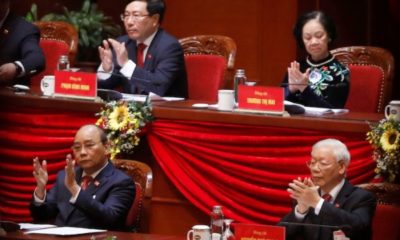
 Politics & Economy4 years ago
Politics & Economy4 years agoVietnam’s unresolved leadership question
-
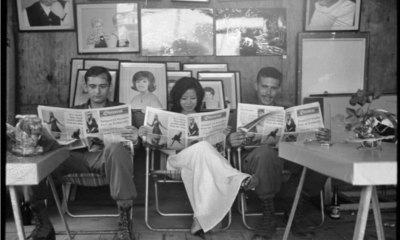
 Politics & Economy1 year ago
Politics & Economy1 year agoRethinking History and News Media in South Vietnam
-
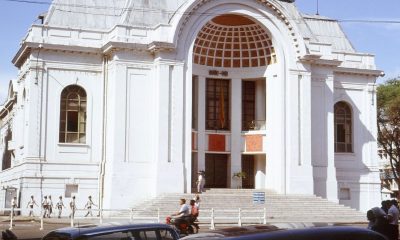
 ARCHIVES5 years ago
ARCHIVES5 years agoDemocracy in action: The 1970 Senatorial elections in the Republic of Vietnam (Part 1)
-

 Society & Culture5 years ago
Society & Culture5 years agoPandemics and Morality: Lessons from Hanoi
-
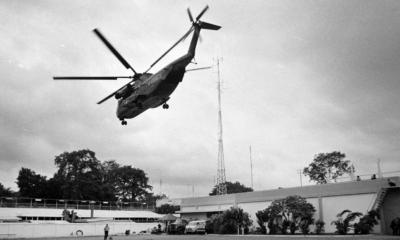
 After 19751 year ago
After 19751 year ago“The Vietnam War Was an Unwinnable War”: On Factuality and Orthodoxy
-

 Politics & Economy4 years ago
Politics & Economy4 years agoThe Limit to U.S.-Vietnam Security Cooperation
-
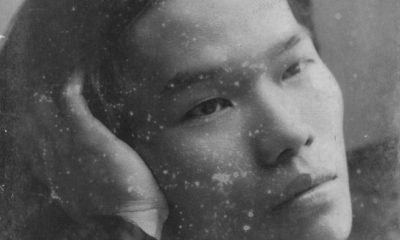
 Politics & Economy5 years ago
Politics & Economy5 years agoNational Shame: How We (Americans) can learn from Nguyễn An Ninh
-
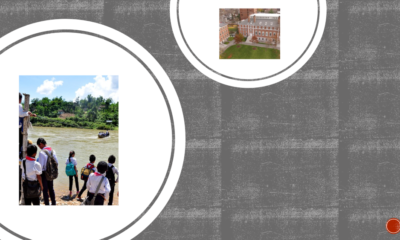
 Politics & Economy4 years ago
Politics & Economy4 years agoUS-Vietnam Partnership must Prioritize Vietnamese Education


